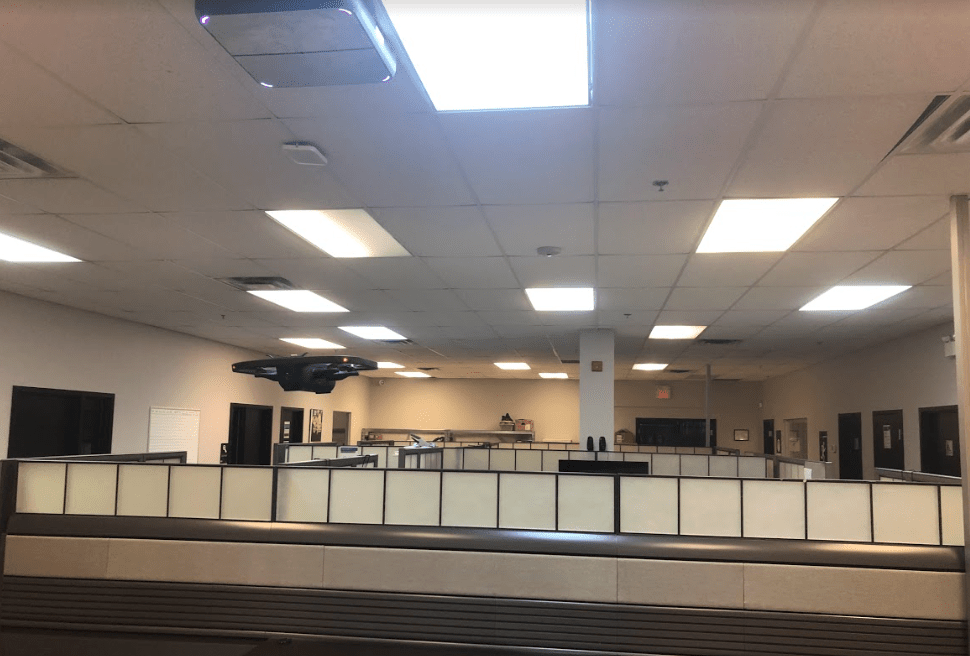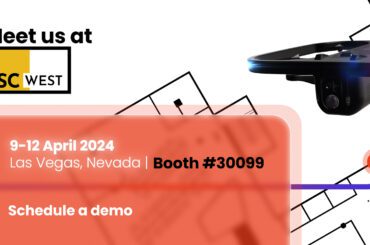We travel to a lot of trade shows, customer sites and meetings in the USA, Canada and all across Europe. Inevitably, the question we hear most often is: How’d you do it? How did you get an indoor drone to dock on a charging and monitoring station mounted on the ceiling? by Amit Moran, CTO & Co-Founder.
For us, it’s a thrilling question, because we love to talk about engineering challenges generally, and the software, hardware, and algorithms that made ceiling docking possible specifically.
Those kinds of engineering challenges are what animates us as professionals. (We’re geeks, we admit it!)
The conversations at these meetings also give us a chance to talk about our company, and the kind of culture we are cultivating. We tell people: at Indoor Robotics, we do things differently. We set out to solve problems – even though it’s hard, and even though others have failed in the past – because that’s what we do. We’re problem solvers.
But since not everyone comes to these shows, or has visited our offices in Israel, we decided to interview our CTO, Amit Moran, to provide some insight into the creative process that went into solving this particular engineering challenge.

What was the motivation to create a ceiling docking station that could be placed in public space like a mall or an office?
It all starts with a business need. We wanted to build a device that would be useful 24 hours per day, even while it’s docked – a camera by day and security guard by night.
Think about a different type of robot – a Roomba. A Roomba does its job cleaning the floor, then goes back to the docking station to charge. While it’s there, it does nothing but charge. It takes up space, energy and accumulates dust. It just charges. It’s passive.
So we wanted to build something that would be useful even while it’s docked. Our solution was to empower our autonomous flying robot, the Tando™, with a dual-purpose. While it’s docked, it acts as a security camera. But when it’s time for a security inspection, it releases itself from the docking station, carries out its mission, and then comes back to charge and monitor. Autonomously.
If we would not have done it this way, most out of the 24 hours of the day would have been wasted.
Our idea was that the Tando™ should always provide value. It can be a camera by day (while it’s docked) that can detect movement, stream video, and provide a security feed like any other camera. But when it needs to detach and go on its mission – or if an alarm goes off and it needs to investigate – it becomes a flying security guard. That’s why we created the solution of ceiling docking.
Can you describe the technical challenge involved in creating a ceiling-based docking station?
The first challenge was that no one had ever done it before.
There was no precedent, no model to follow. We had to invent a ceiling docking procedure and we had to invent the way it charges from the top.
We could have had the robot land on a shelf if we just wanted to solve the real estate problem, in other words the issue of where to dock the drone. But we wanted to solve the value problem and that’s more complex. We wanted the drone to be able to dock and charge efficiently, monitor its surroundings with its built-in cameras and sensors, and detach safely when needed. We came to the conclusion that the best way to do this is to make the drone attach and charge from its top side to the docking station, and that had never been done before.
First, we analyzed the problem and edge cases. One of those cases had us design a mechanism that would latch the drone securely during a natural catastrophe like an earthquake or a routine power outage. It had to stay connected, otherwise there was the concern it could detach and fall, creating a safety hazard.
Because we are docking on the ceiling, the docking mechanism itself – the way the drone positions itself and attaches – is critical. If the drone misses the docking station, it can fall. We could not be satisfied with a 95% success rate, nor with 99% either – it had to be 100%! How do you achieve 100%? In engineering, that’s never possible. So we’re at 99.999%, and in the 0.0001% case of an actual failure, the drone knows how to land safely, and alert the operators. For that scenario, we had to create a separate landing process.
Are there any technical advantages to an indoor drone docking on the ceiling?
Yes, less ground turbulence. When a helicopter tries to land, the air flow created by the rotors hits the ground and shoots back up. That is called “ground effect” and applies to both helicopters and drones. That phenomenon makes it hard for flying objects to land with precision and is the reason many docking stations of autonomous drones are bigger than the drone itself – to account for the ground effect and the problem it creates for landing. But that’s not the case on the ceiling.
When the drone is docked, how does it disconnect to start a security patrol?
This was very challenging. We had to take into account all the safety requirements – it had to detach with ease for a security mission but could never detach without a specific command. It also had to stay secure in any eventuality, like a power outage or earthquake.
We developed several solutions. From an algorithm and software point of view, there’s an important protocol between the drone and the docking station. Before it detaches, the drone self-tests its sensors, motors, processing unit, memory, battery and temperature. It needs to make sure it’s in good working order. Then it asks the docking station to detach through a confirmation process. An audible alarm and flashing lights indicate to its surroundings that Tando™ is about to detach, allowing anyone around to proactively create some space. The docking station then releases the drone via a mechanism that causes the magnetic force to weaken and allows the drone to go to its mission.
If at any point during this process, the system determines there is a problem, the process is aborted immediately. This can be done up to the very last second before Tando™ is detached.
What did you learn from creating the ceiling docking station for the Tando™?
Innovation requires the work of many different disciplines. It’s not just a great algorithm or robust software or an excellent mechanical design. What’s required is an out-of-the-box-thinking team, the desire to innovate, and the drive to make all these work together. And so much testing.
But the process was so fulfilling. By the end, we had 4 patents, and a whole new device to introduce to the indoor drone market. Not only for me, but for my team as well, it was an incredibly rewarding experience. Of course, we’re already on to the next engineering challenges, and having fun doing it.
Our market is expanding and we’re always looking for great people who are inspired by engineering, the technical problems it can solve, and the business opportunities it creates.
To talk to us about joining our team, contact us here.






